|
TRANSLATE THIS ARTICLE
Integral World: Exploring Theories of Everything
An independent forum for a critical discussion of the integral philosophy of Ken Wilber
 David Christopher Lane, Ph.D.
Professor of Philosophy, Mt. San Antonio College Lecturer in Religious Studies, California State University, Long Beach Author of Exposing Cults: When the Skeptical Mind Confronts the Mystical (New York and London: Garland Publishers, 1994) and The Radhasoami Tradition: A Critical History of Guru Succession (New York and London: Garland Publishers, 1992). David Christopher Lane, Ph.D.
Professor of Philosophy, Mt. San Antonio College Lecturer in Religious Studies, California State University, Long Beach Author of Exposing Cults: When the Skeptical Mind Confronts the Mystical (New York and London: Garland Publishers, 1994) and The Radhasoami Tradition: A Critical History of Guru Succession (New York and London: Garland Publishers, 1992).
THE AGNOSTICS
Thinkers in an Indeterminate Cosmos
Introduction |
Isaiah Berlin |
Charles Darwin |
John Dewey |
Enrico Fermi |
David Hume |
Edmund Husserl |
Thomas Henry Huxley |
Thomas Kuhn |
Lynn Margulis |
John Maynard Keynes |
G.E. Moore |
Karl Popper |
Michael Schmidt-Salomon |
Herbert Spencer |
Leo Szilard
ENRICO FERMIEmika SukthanasophonEnrico Fermi was famous as an Italian physicist and the creator of the world's first nuclear reactor. He was born in Rome on September 29, 1901. His interests have always been physics and mathematics since he was young; the same goes for his brother, Giulio, who tragically died during a botched operation on his throat. After Fermi's brother passed away in 1915, Fermi decided to focus on his scientific studies more seriously to distract himself from thinking about his brother. 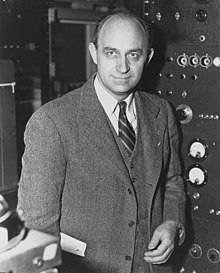 Enrico Fermi There was once an entrance exam where Fermi's essay caught the examiners' eyes. The examiners agreed that it was as impressive as a Ph.D. dissertation. Eventually, Fermi received his doctoral degree from Normale Superiore in Pisa. In 1925, Fermi became a professor at the University of Florence. Professor Orso Mario Corbino, director of the Institute of Physics, helped Fermi choosing his team with outstanding minds, which later became a famous group. Fermi and his wife Laura had two children, including a son, Giulio Fermi, and a daughter, Nella Fermi. Fermi later moved to New York with his wife and children because of the Italian fascist racial laws against his Jewish wife. He worked at Columbia University and moved to the University of Chicago later. During World War II, he was working on the Manhattan Project. Because of Fermi's stellar reputation (he was both a great theorist and great experimenter) his name has been used for a variety of awards, grants, and buildings. Enrico Fermi eventually became enamored with working on neutron research. This became his focus after James Chadwick discovered neutrons in 1932. It was while working with neutrons that Fermi discovered radioactivity happened because the nucleus was unstable. It did not matter whether the process was artificial or natural. When Irene and Joliot Curie achieved artificial activity using alpha particle bombardment before 1933, natural radioactivity was known to be possible based on the chain of daughter products of thorium and uranium series such as radium and others. However, in artificial radioactivity, the balance is disturbed intentionally when a particle is sent. Fermi's experiments on slow neutrons (and showing what elements could be released and diagnosed) were useful despite their primitive nature since they helped in understanding the structure of the nucleus. In one finding, Fermi discovered that the excess neutrons in the nucleus led to the emission of a beta particle. Fermi studied the phenomenon and came up with the theory of beta decay. While in the process, Fermi also found out about what was previously believed to be only a theoretic particle aptly called the neutrino, which was a particle with zero charges and had negligible mass. It had been proposed earlier by Wolfgang Pauli, a distinguished physicist in his own right. He stated that neutrons decay into a proton to give out an electron. The quantum mechanics' statistical laws became widely known as Fermi's Statistical that give the statistical model of the core as well as the atoms. Most of Fermi's work has contributed to quantum theory. The Nobel prize that he was awarded in 1938 was “for his demonstrations of the existence of new radioactive elements produced by neutron irradiation, and for his related discovery of nuclear reactions brought about by slow neutrons.” After Frederic and Joliot-Curie announced that they had generated artificial radioactivity through the bombardment of elements using alpha particles, Fermi was inspired to try and reproduce such radioactivity. He succeeded in using slow neutrons. Fermi made a lot of contributions to physics; for example, he came up with the theory of beta decay by building upon the hypothesis of the neutrino that Wolfgang Pauli had formulated in 1930. That came about when it was discovered that the excess neutrons in the nucleus led to the emission of a beta particle. Consequently, he argued that neutrons decay into a proton to emit an electron. From 1924, Fermi knew how he could quantize atoms of particles. However, he still did not know how he could dispose of them in the energy by levels. There was a missing piece that later became known as the “Pauli Exclusion Principle.” In 1926, not long after he went back to the university, he discovered the quantum statistical laws known as Fermi-Dirac statistics since Paul Dirac also determined the independently about the same time Fermi had made those discoveries. The particles that are applied by Fermi direct statistics are known as fermions. Fermions are quite different from Bose-Einstein statistics since two fermions cannot occupy a similar quantum state. Protons, electrons as well as neutrons are only a few examples of particles that are known as fermions. After receiving his Nobel Prize, Fermi went to New York. While there, he took up the role of a lecturer at Colombia University. Since he was excited about the discovery of fission, he partook in the main fission tests in the U.S. couple of weeks after he had arrived. Because the project was supported by funding from the U.S. governments' Uranium Committee, Fermi proceeded to carry out his research concerning the nuclear chain reactions. He did much of hise work with the members of the Colombia University football team as his co-workers. He had recruited them to help him in building chain reaction piles of uranium and graphite. When the United States got into the Second World War, the uranium research was given a new urgency and Fermi was instrumental in the early experiments. While there, he studied the essentials of pile operation, where he built a small experimental unit known as the Chicago Pile-1. The project was accelerated to critical in December 1942. It became the first controlled nuclear reaction that was self-sustained. After he achieved that success, he was recruited to take part in the Manhattan Project. It was a project that was meant to build the first atomic bomb. Since Fermi had been successful in creating nuclear reactors, the Manhattan project was allocated funds more freely, so the project could advance at a very rapid speed. Consequently, nuclear facilities were constructed at Oak Ridge, Hanford, and Tennessee. The critical assembly plant was also constructed in New Mexico. The project enlisted thousands of scientists from the United States. However, Fermi and Leo Szilard were considered to be the most important persons in the project. The project unveiled the production of chain reaction, and the two scientists were the first to achieve that goal. Despite the name, the project took place all over the United States, England, Canada, some areas of south pacific, and the Belgian Congo. Fermi contributed significantly to nuclear and particle physics. His work in the field is seen when Fermi decided to shift his career from the outer electron and focus on the nucleus of the atom. An example is the application of statistics in the atomic model. However, L. H. Thomas had already anticipated that while working independently. As such, they joined forces to form the Thomas-Fermi atoms, which are used to provide good approximations in many problems. Its main aim was to calculate the density of the electronic cloud surrounding the nucleus as an environment of completely degenerate gas of electrons, which is attracted by the nucleus. Fermi made many applications of the method to X-ray spectroscopy to the periodic system of the elements, ions, and optical spectroscopy. Other studies in molecular and nuclear physics also followed. After Fermi realized that quantum mechanics had reached a certain maturity, he switched his attention to nuclear physics. While there, he carried out an investigation of the theory of the hyperfine structure of the spectral lines as weak as the nuclear magnetic momenta, which was a good subject for switching from atomic to nuclear physics. Although Fermi was formally baptized in the Roman Catholic church, his family were not overtly religious and he developed an agnostic outlook at matters of religion and metaphysics. Yet, Fermi saw the majestic nature of the universe and even his professed “unknowingness” acknowledged the absolute mystery of the cosmos that we inhabit. As his contemporary Albert Einstein so beautifully explained, The most beautiful experience we can have is the mysterious. It is the fundamental emotion which stands at the cradle of true art and true science. Whoever does not know it and can no longer wonder, no longer marvel, is as good as dead, and his eyes are dimmed. It was the experience of mystery—even if mixed with fear—that engendered religion. A knowledge of the existence of something we cannot penetrate, our perceptions of the profoundest reason and the most radiant beauty, which only in their most primitive forms are accessible to our minds—it is this knowledge and this emotion that constitute true religiosity; in this sense, and in this alone, I am a deeply religious man. I cannot conceive of a God who rewards and punishes his creatures, or has a will of the kind that we experience in ourselves. Neither can I nor would I want to conceive of an individual who survives his physical death; let feeble souls, from fear or absurd egoism, cherish such thoughts. I am satisfied with the mystery of the eternity of life and with the awareness and a glimpse of the marvelous structure of the existing world, together with the devoted striving to comprehend a portion, be it ever so tiny, of the reason that manifests itself in nature. Enrico Fermi also wrote something similar to Einstein's (though far less quoted) about an experience that both haunted and enchanted him for his entire life. It was when he overheard some rural farmers talking about the utter magnificence of the universe. Enrico Fermi describes the scene which illustrates how an agnostic can also have profound feelings of reverence, of devotion, and of complete awe about all that he studies. Many years have passed, but I remember it as though it were yesterday. I was very young, and I had the illusion that human intelligence could penetrate all things. That's why I immersed myself in my studies to the exclusion of everything else. Reading extensively wasn't enough for me, and I spent the good part of each night meditating on the most abstruse questions. An intense neurasthenia forced me to stop and to leave the city, full as it was of temptations for my exhausted brain, and take refuge in the remote countryside in Umbria. I was reduced to a nearly vegetative, though by no means animalistic, life. I read a bit, prayed, and took many walks in the flowering countryside (it was May) joyfully contemplating the thick green crops shot through with scarlet poppies, the rows of poplars stretching along the canals, the blue mountains closing in the horizon, and the tranquil human work carried on in the fields and farmhouses. One evening, or rather one night, as I was waiting for sleep which was late in coming, I sat down in a field, listening to the quiet conversation of some farmers nearby. They spoke of very simple things, though none of which was coarse or frivolous as happens in other social classes. Our farmers rarely speak and when they do it is to say something necessary, sensible, and at times, wise. Eventually they became silent, as if the serene and solemn majesty of the night, moonless but teeming with stars, had cast down a mysterious enchantment upon those simple souls. Rupturing the silence, but not the spell, the rustic voice of a burly, rough farmer, who was lying stretched out on the grass, his eyes fixed on the stars, exclaimed, almost as if he were obeying a profound inspiration, “How beautiful! And yet some say God doesn't exist.” I have repeated it to myself many times since, that phrase of an old farmer in that place, at that time. After months of barren study, it so vividly touched my mind and heart that even now I remember that simple scene as if it were yesterday. A venerable Hebrew prophet some three thousand years ago decreed: “The Heavens declare the glory of God.” One of the most celebrated philosophers of modern times wrote: “Two things fill me with awe, the starry sky above me and the moral law within me.” That Umbrian farmer did not even know how to read. But in his heart, safeguarded by an honest and hard-working life, there was a small corner in which the light of God descended with a power not much inferior to that of the prophets and perhaps greater than that of philosophers. Further Readings:1. The Last Man Who Knew Everything 2. Enrico Fermi: And the Revolutions of Modern Physics 3. Enrico Fermi: Physicist by Emilio Segrè 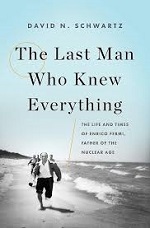 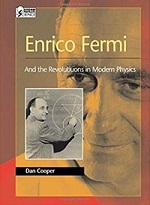 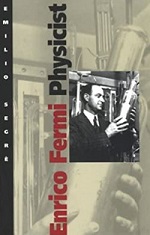 FROM THE INTRODUCTION | DAVID LANE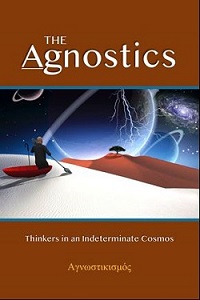
Often in the philosophy classes I have taught in undergraduate and graduate school, I would bring up this point of “unknowingness.” Pointing to a crumpled piece of writing paper, I would ask the class, “What is this?” Almost in unison, the students would respond, "A piece of paper." Taking this as my cue to lead into a deeper philosophical investigation of materialism, I probed further, "Yes, but what is that?” Catching my drift, one student invariably answered, “Oh, it is actually a transformed sheet of wood.” Not wanting them to stop there, I asked, “And wood is made of what?” “It's comprised of molecules," the more scientifically oriented students would shout. Connecting to the now forgotten inner space ride at Disneyland, which takes one through an imaginary voyage inside a snowflake molecule, I queried, “But what is a molecule made of.” By this time, we had gotten down to the subatomic level, and our words began to betray our modicum of knowledge (electrons, protons, quarks, lucky charms, superstring). The final question I asked was quite simple, but given the line of investigation it led to some severe complications: What is matter? Well, it should be obvious to the reader as it was to my class and to myself that there's only one truly appropriate response, “I don't know.” Now, this is exactly the response not only of most mystics, but most quantum physicists as well. As Sir Arthur Eddington, the distinguished astronomer put it, “Something unknown is doing we don't know what!” To be sure, mystics have said that the world (or matter) is nothing but consciousness. But, what is consciousness? Not even a sage as enlightened as Ramana Maharshi of South India could answer that question. To such queries, Ramana would often sit in silence. Ultimately, matter leads to consciousness and consciousness to God or Nature (with a capital N) and both to Mystery. However, no matter how you define it, slice it, categorize it, blend it, intuit it, the fact remains that Reality is a Mystery, and nobody apparently (not me, not you, not Einstein) knows what that Reality is. We are sitting right in the middle of the Mystical Dimension.
Comment Form is loading comments...
|